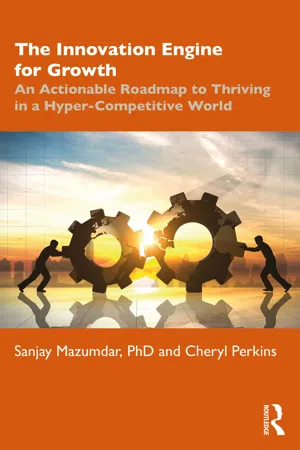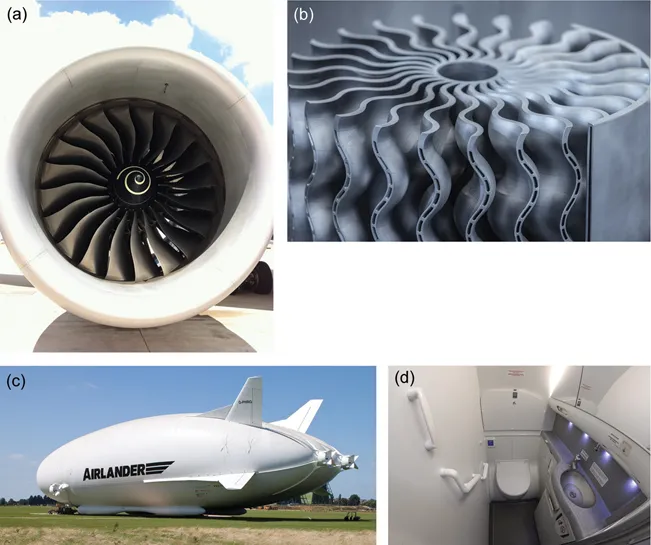
The Innovation Engine for Growth
An Actionable Roadmap to Thriving in a Hyper-Competitive World
- 180 pages
- English
- ePUB (mobile friendly)
- Available on iOS & Android
The Innovation Engine for Growth
An Actionable Roadmap to Thriving in a Hyper-Competitive World
About this book
Written by experts on innovation and growth, this book provides the necessary tools to systematically develop and sustain profitable innovation pipelines.
In a hypercompetitive global market, businesses must innovate to survive; yet the failure rate for innovation is extremely high. Strategists and thought leaders, Cheryl Perkins and Dr. Sanjay Mazumdar, offer a sophisticated yet practical approach for implementing successful innovation. Leveraging thought-provoking questions and powerful templates, the book outlines how companies can leverage core strengths, build internal innovation capabilities, partner effectively, and identify the promising areas to pursue. In addition, the book highlights emerging innovations in several major industries, providing fodder to fuel creative thinking and exploration of possible applications across a variety of different industries.
Managers and leaders will welcome the innovation insights and examples, as well as the templates to build an organization's plan to diagnose patterns of innovation, identify opportunities, and apply emerging innovations in their own industries and businesses.
Frequently asked questions
- Essential is ideal for learners and professionals who enjoy exploring a wide range of subjects. Access the Essential Library with 800,000+ trusted titles and best-sellers across business, personal growth, and the humanities. Includes unlimited reading time and Standard Read Aloud voice.
- Complete: Perfect for advanced learners and researchers needing full, unrestricted access. Unlock 1.4M+ books across hundreds of subjects, including academic and specialized titles. The Complete Plan also includes advanced features like Premium Read Aloud and Research Assistant.
Please note we cannot support devices running on iOS 13 and Android 7 or earlier. Learn more about using the app.
Information
Section II Identifying Opportunities, Partners, and Resources – Emerging Innovations by Selected Industries1
- Emerging Innovations: new technologies driving current and future innovation – descriptions, trends, highlights.
- Revenue Impact and Resulting Growth Opportunities: innovations offering the highest future growth rates and largest current opportunities, including current and future market size, CAGR, and technology maturity. COVID impact is noted.
- Horizon Mapping Implications: opportunities offering H2 and H3 potential for breakthrough innovation, long-term growth, and expansion beyond the core. COVID-19 has accelerated Horizon timetables though the definitions remain the same.
Chapter 5 Aerospace
- Emerging Innovations
- Revenue Impact and Resulting Growth Opportunities
- Horizon Planning Implications
Emerging Innovations
By replacing traditional inspection procedures like general and detailed visual inspections and non-destructive inspections (X-ray, eddy current, and dye penetrant), less time would be needed to perform time-consuming disassembles to gain access to inspection areas. The inspection times would come down to minutes instead of hours in some cases.4


At Airbus, our hybrid technology has been spurred by the European emission rules requiring that aircraft emit 75% less CO2 and generate 65% less noise in 2050 than in 2000. The ultimate goal for Airbus is to develop zero-emission aviation.6
Revenue Impact and Resulting Growth Opportunities
Table of contents
- Cover
- Half Title
- Title Page
- Copyright Page
- Table of Contents
- List of Figures
- List of Tables
- List of Templates
- Acknowledgments
- About the Authors
- Introduction
- Getting the Most Out of This Book
- Section I Defining Your Strategy – Innovation for Sustainable Growth
- Section II Identifying Opportunities, Partners, and Resources – Emerging Innovations by Selected Industries1
- Section III Executing Your Strategy – Integrating Core Capabilities with External Opportunities
- Index